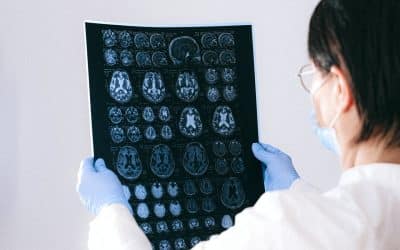Abstract: Growing evidence has demonstrated that the nucleotide‑binding oligomerization domain‑like receptor family pyrin domain containing 3 (NLRP‑3) inflammasome‑mediated inflammatory pathways have been involved in the secondary injury of traumatic brain injury...
Traumatic Brain Injury (TBI)
Hyperbaric Oxygen Therapy (HBOT) Research for Traumatic Brain Injury (TBI).
Seizures during hyperbaric oxygen therapy: retrospective analysis of 62,614 treatment sessions.
Abstract: Hyperbaric oxygen (HBO₂) therapy is considered to be a generally safe therapy. However, data regarding seizure incidence during HBO₂ therapy as a clinical presentation of central nervous system- (CNS) related oxygen toxicity are conflicting (ranging from...
Umbilical cord-derived mesenchymal stem cell transplantation combined with hyperbaric oxygen treatment for repair of traumatic brain injury.
Abstract: Transplantation of umbilical cord-derived mesenchymal stem cells (UC-MSCs) for repair of traumatic brain injury has been used in the clinic. Hyperbaric oxygen (HBO) treatment has long been widely used as an adjunctive therapy for treating traumatic brain...
Systematic Review of Traumatic Brain Injury and the Impact of Antioxidant Therapy on Clinical Outcomes.
Abstract: Traumatic brain injury (TBI) is an acquired brain injury that occurs when there is sudden trauma that leads to brain damage. This acute complex event can happen when the head is violently or suddenly struck or an object pierces the skull or brain. The...
Effects of hyperbaric oxygen on the Nrf2 signaling pathway in secondary injury following traumatic brain injury.
Abstract: We investigated the effects of hyperbaric oxygen treatment on the Nrf2 signaling pathway in secondary injury following traumatic brain injury, using a rat model. An improved Feeney freefall method was used to establish the rat traumatic brain injury model....
The efficacy and safety of hyperbaric oxygen therapy in traumatic brain injury.
Abstract: Hadanny, Efrati, , , , , , , (2016). The efficacy and safety of hyperbaric oxygen therapy in traumatic brain injury. Expert review of neurotherapeutics, 2016 ;16(4):359-60. https://www.ncbi.nlm.nih.gov/pubmed/26900796
Googling Concussion Care: A Critical Appraisal of Online Concussion Healthcare Providers and Practices in Canada.
Abstract: Concussion is an emerging public health concern, but care of patients with a concussion is presently unregulated in Canada. Independent, blinded Google Internet searches were conducted for the terms "concussion" and "concussion clinic"...
Hyperbaric Oxygen Alleviates Secondary Brain Injury After Trauma Through Inhibition of TLR4/NF-κB Signaling Pathway.
Abstract: The aim of this study was to investigate the efficacy of hyperbaric oxygen in secondary brain injury after trauma and its mechanism in a rat model. A rat model of TBI was constructed using the modified Feeney's free-fall method, and 60 SD rats were randomly...
Hyperbaric oxygen: B-level evidence in mild traumatic brain injury clinical trials.
First, to demonstrate that B-level evidence exists for the use of hyperbaric oxygen therapy (HBOT) as an effective treatment in mild to moderate traumatic brain injury/persistent postconcussion syndrome (mTBI/PPCS). Second, to alert readers and researchers that currently used pressurized air controls (≥21% O2, >1.0 ATA) are therapeutically active and cannot be utilized as sham controls without further validation. Review of published, peer-reviewed articles of HBOT prospective and controlled clinical trials of mTBI/PPCS symptoms. Published results demonstrate that HBOT is effective in the treatment of mTBI/PPCS symptoms. Doses of oxygen that are applied at ≥21% O2 and at pressures of >1.0 ATA produce improvements from baseline measures. Some of the recently published clinical trials are mischaracterized as sham-controlled clinical trials (i.e., sham = 21% O2/1.2-1.3 ATA), but are best characterized as dose-varying (variation in oxygen concentration, pressure applied, or both) clinical trials. Hyperbaric oxygen and hyperbaric air have demonstrated therapeutic effects on mTBI/PPCS symptoms and can alleviate posttraumatic stress disorder symptoms secondary to a brain injury in 5 out of 5 peer-reviewed clinical trials. The current use of pressurized air (1.2-1.3 ATA) as a placebo or sham in clinical trials biases the results due to biological activity that favors healing.

